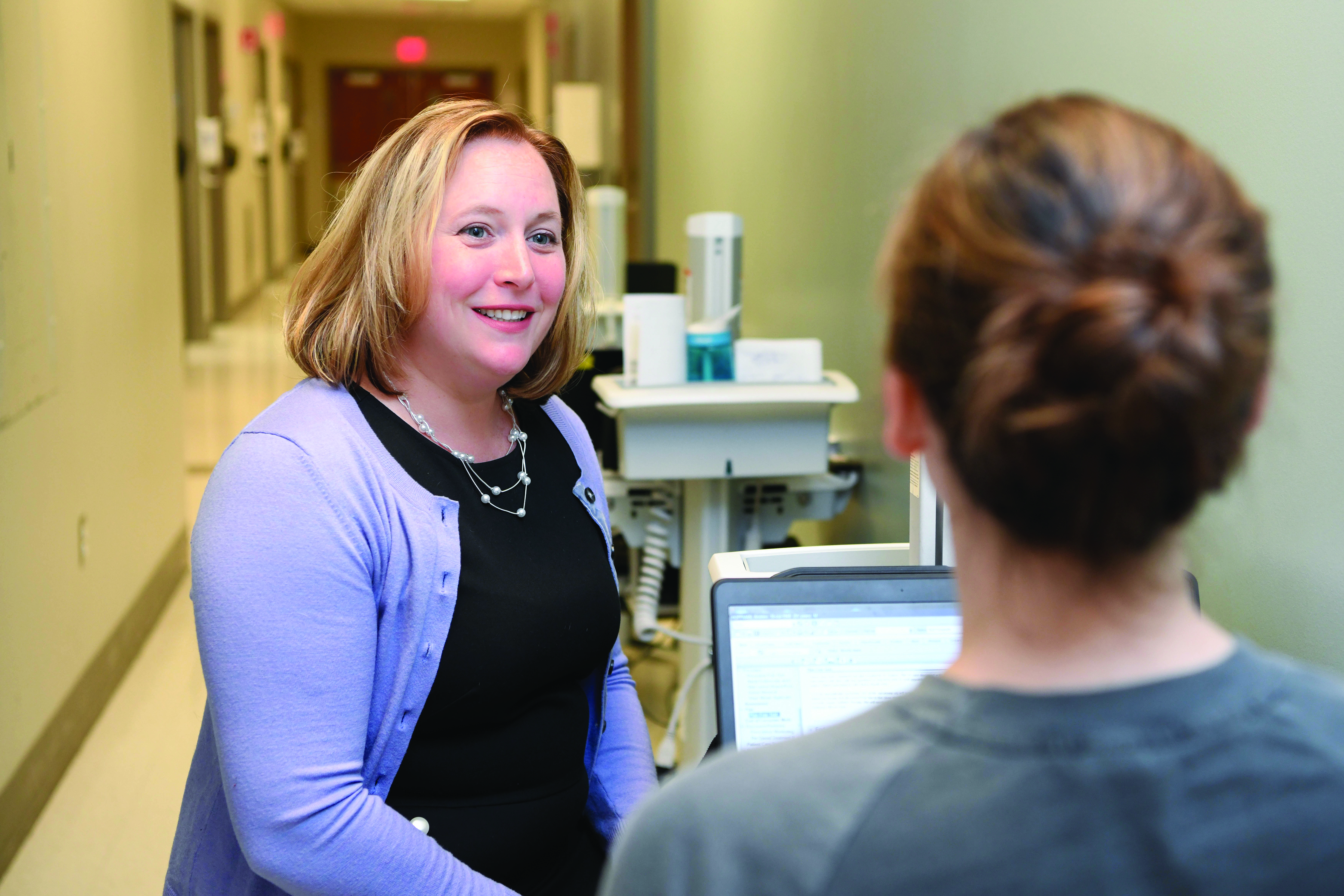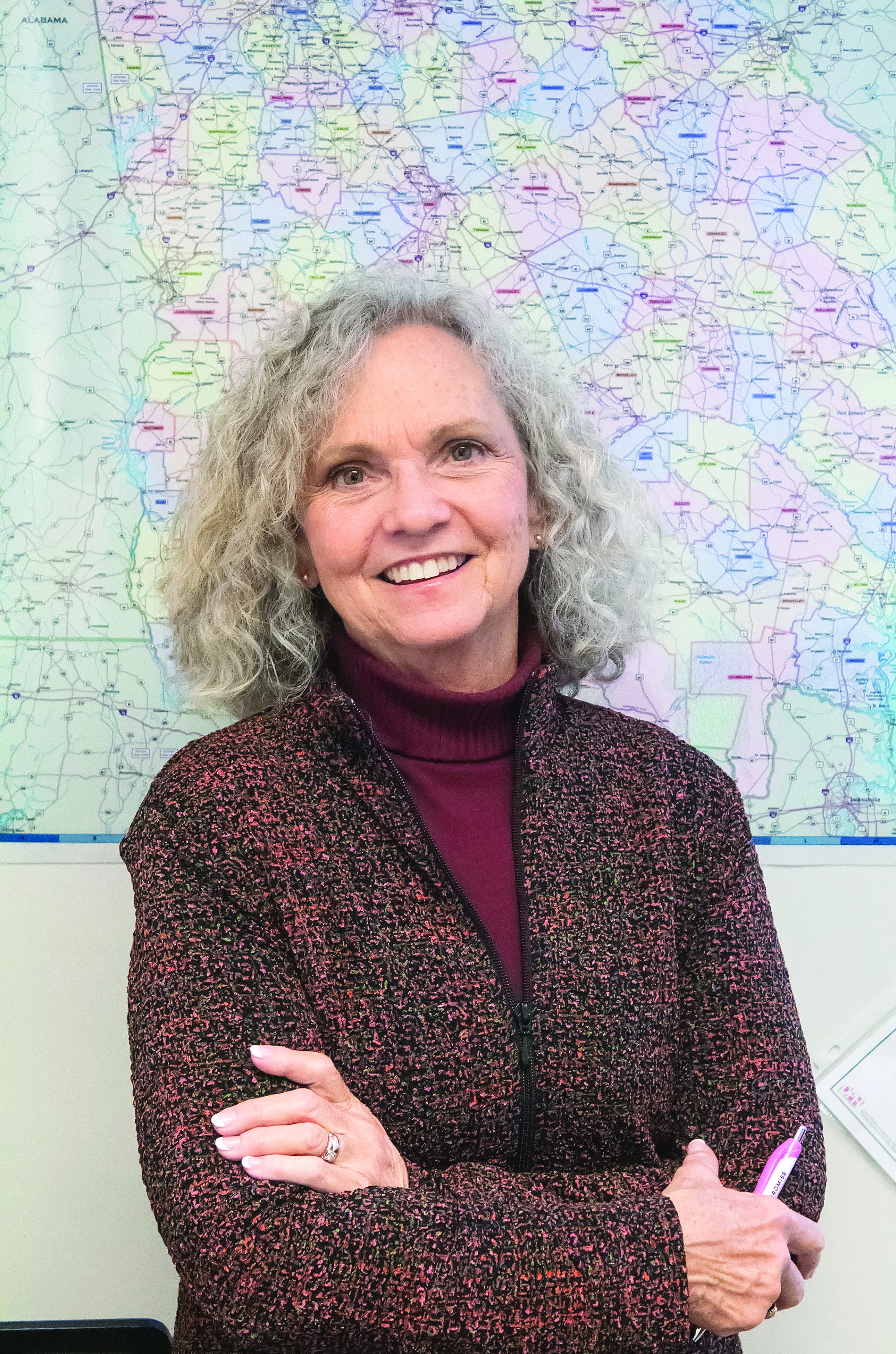Geographic Disparities in Cancer Care
As part of a larger understanding of the social determinants of health, geography—whether it’s rural or metropolitan, urban or suburban—plays a huge part in how patients understand, receive, and access care. Regardless of zip code, community, or travel distance, patients have a right to receive the best possible care for their cancer diagnosis. As staunch patient advocates, oncology nurses are primed to help patients navigate geographic disparities and overcome challenges they face in treatment.

Big Cities Don’t Always Mean Broad Access
In many metropolitan areas, skylines are peppered with large academic cancer centers that offer the latest and greatest in clinical trials, treatment advances, and supportive care services for patients. Although easily accessible for many metropolitan residents, those who live away from a city’s center may find the commute a challenge.
“When thinking about geographic cancer disparities, we immediately think of rural areas versus urban city centers. Having to drive an hour both ways for a rural patient to visit their oncology team can be detrimental to successful outcomes. Also, public transit can be virtually nonexistent in rural communities, and without transportation patients can’t make it to their care facilities,” ONS member Alice Kerber, MN, APRN, ACNS-BC, AOCN®, AGN-BC, oncology clinical nurse specialist at Georgia Center for Oncology Research and Education in Atlanta, and member of the Metro Atlanta ONS chapter, says. “Beyond the element of distance, basic topography can pose problems. Some of our patients from north Georgia refuse to go over the mountains to get care in Atlanta. Navigating complex interstate systems can be daunting to patients unfamiliar with the area.”
Traditionally, rural locations have been associated with higher cancer mortality rates, and that’s directly tied to a patient’s ability (https://dx.doi.org/10.15585%2Fmmwr.ss6614a1) to physically visit a cancer center or clinic. However, not all patients living in a large metropolitan city’s borders can easily access their cancer care.
“Buffalo has an urban population that might be located near large-scale facilities but experiences a high rate of poverty, poor access to financial resources, and limited transportation options,” ONS member Carly Gerretsen, DNP, RN, FNP-C, RNFA, director of oncology outpatient operations at Erie County Medical Center in Buffalo, NY, and member of the Western New York ONS Chapter, says. “For some of these patients, if they can’t get here by bus or walking, they may not come in at all.”

And insurance coverage determines where patients can and cannot receive cancer care.
“In-network and out-of-network institutions are not always easily accessible, depending on a patient’s location, financial status, or ability to arrange transportation. For some patients, the closest hospital may be down the road a few blocks, but the hospital that their insurance accepts could be a 30-minute drive across town,” Kerber says.
Beyond travel complications, receiving care at an unfamiliar institution can spark feelings of mistrust and anxiety by having to visit with and receive treatment from people well outside of a patient’s known community.
“People generally live in communities of similar racial and ethnic backgrounds. We know that African American and Hispanic patients can have worse outcomes and higher mortality rates compared to their Caucasian counterparts,” Kerber says. “These communities often have different experiences with the healthcare system, and that affects their trust in providers, especially when receiving care outside of their own communities and away from people they know and feel comfortable with.”
Geography’s Financial Impact
With geographic disparities comes the potential for increased financial burden associated with travel, insurance coverage, and even socioeconomic status. The greater barriers are to care, the more that costs can begin to mount.
“Some patients, regardless of location, will come to us with some kind of insurance. But this might be the first time they’ve ever had a big health event in their lives and that leads to financial issues,” Kerber says. “They might have insurance but still face the costs of copays and high deductibles, then they have to travel for their care, stay overnight at a hotel, and pay for certain tests, and they end up struggling.”
Both Gerretsen and Kerber agree that geography and communities go hand in hand, and some communities are at a lower socioeconomic level. And Gerretsen adds that financial burden can often beget further financial burden.
“Some of my rural patients are farmers and their insurance coverages can widely vary. Not only does it cost them money to travel here, along with whatever copays they could have, but they’re also missing an entire day of work,” Gerretsen says. “In some cases, patients will wait until the last minute to see us, and that could mean hospitalization which, in turn, means even higher healthcare costs.”
Promises and Pitfalls of Technology
Between cellphones and the internet, the world is a smaller place than ever before. Connecting with people from across the globe can done with the touch of a button. Providers use options like telehealth and internet-based technologies to close the geographic gap, but it still comes down to a matter of access.
“Telehealth programs can be a wonderful way to provide access to areas that have none. A big part of the geographic disparities conversation means doing the best with what’s available to a person. Using technologies, connecting on tablet devices and over the phone can be a great way to close those gaps in care,” Kerber says. “But technology is a double-edge sword, and those benefits can be limitations too if the Wi-Fi is down or technical difficulties take hold.”
Not all people are afforded the same access to the internet or cellphones, and it can’t always be a reliable way to overcome barriers in geography. For some providers, telehealth isn’t an option, and working with local providers in rural areas can be a helpful alternative when needing to assess patients remotely.
“We try to coordinate with local providers and emergency departments for our rural patients so they can get seen quickly without having to come all the way to our facility,” Gerretsen says. “Telehealth and other technologies can be great. But if a patient spikes a fever or is experiencing some kind of side effect, it can difficult, or contraindicated,to give them advice over the phone.”
How to Overcome Disparities
Addressing geographic disparities starts with assessment and transparency. Nurses must watch for the issues that patients face and find out the barriers that could affect treatment.
“Nurses are great at looking at care holistically. During assessment, we ask patients if they live alone, if they have two floors in their house, and if anyone came with them to their appointment, but we don’t always ask them if they’re rural or urban or if they had trouble getting there,” Kerber says. “As nurses, we need to look at the big picture of their care. I always think of patients as an iceberg in the water. What we know about them is the piece that’s above the water line, but there’s so much more that lies below the surface. We have to ask those questions to find out.”
Kerber also cites the importance of teamwork and collaboration. Nurses are vital communicators and can help coordinate the team to ensure patients aren’t slipping through the cracks, no matter their physical location. As the most trusted profession in the United States (https://news.gallup.com/poll/274673/nurses-continue-rate-highest-honesty-ethics.aspx), nurses are primed to lead the geographic disparity conversation with the healthcare team and connect patients with the resources they need.
“Nurses are on the front lines, gathering information and assessing all disparities in patient care. They work proactively to understand the details of a patient’s condition, circumstances, living arrangements, transportation, and other barriers to care and coordinate with the healthcare team to think outside of the box to find solutions,” Gerretsen says. “More so than anyone else on the care team, patients will open up to their nurses. The information gleaned in those conversations can be invaluable to getting them through their cancer journey.”
When it comes geographic disparities, nurses can be the great equalizer. Acknowledging the issues, working closely with patients, and identifying solutions to address a patient’s specific challenges can help close the gap.
For patients with cancer, location doesn’t have to be everything. Not with nurses on their side.
